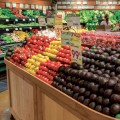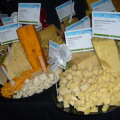I just got back from a family vacation in Kauai. Yes, it was nice. But there is trouble in paradise. Mention Hawaiian cuisine, and most people think of fresh fruit, plate lunches, poke salad and Spam. It’s telling that Spam has become an iconic Hawaiian food. It comes in a can. It has an indefinite shelf life. And it’s shipped across the Pacific Ocean from a distant factory in the Midwest. Jokes aside, Spam points to a real problem in Hawaii.
Hawaii is the most food insecure state in America. It imports as much as 90 percent of its food and is highly vulnerable to disruptions in food supplies and spikes in the cost of oil. I was struck by the high cost and limited variety of food. We cooked for ourselves most nights because it was cheaper than eating out, but a trip to the grocery store was shocking. A carton of eggs was $7. Kale went for $4.50 a bunch. Potato chips were $5 a bag. (OK, they were fried in fancy avocado oil, but still). Luckily, I found a local few local farmers markets.
Whenever I travel, I try to visit the local farmers market. It offers a window onto the local food scene, what’s grown and who buys it. But the Koloa market on Kauai’s south shore was unlike anything I’d even seen. At home, I like to go to my farmers market early. It opens at 9am, and I’m often one of the first people there. At the Koloa market, however, there’s a long line that forms well before it opens at noon. A rope strung across the parking lot keeps people out. Once the rope drops, the people rush in to scoop up deals on locally grown fruit and vegetables. And these weren’t yuppies. They were working-class people shopping for their families. By 1:30pm, several vendors had sold out.
It’s easy to see why the market attracts such a crowd. It’s cheaper than what’s available in the grocery store and far fresher, since the food didn’t travel 2,500 miles across the Pacific Ocean. There’s a greater variety, too. I saw several kinds of mangoes, local tomatoes, green beans, passion fruit, and my favorite, soupsop, a spiny, kidney-shaped fruit also known as the custard apple.
As recently as the 1930s, Hawaii was 100 percent self-sufficient. That’s not possible now, but with the islands’ year-round growing season and fertile soils, developing a thriving local food economy is entirely possible and should be a top priority for Hawaii. In addition to fresher, often lower-priced food, local agriculture means local jobs and less reliance on a global, petroleum-dependent food system is running out of gas, literally and figuratively. If the container ships and planes ever stopped coming to Hawaii it wouldn’t take long for food supplies to dry up. By then, it would be too late to start talking about cultivating a local food system. For us mainlanders who enjoy both the abundance of farmers markets and relatively “cheap” food at stores, it’s worth appreciating that our food supply is not a given. It runs mainly on oil and cheap labor, resources no longer in such abundance. Where would your food come from if either of those things dried up?
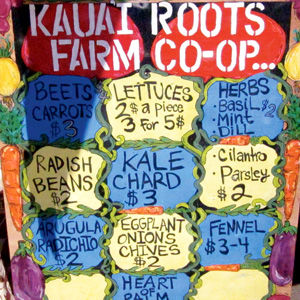
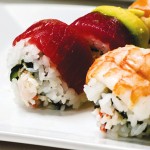 Blush Raw Bar and Lounge
Blush Raw Bar and Lounge 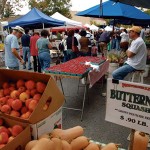 Campbell’s Farmer’s Market
Campbell’s Farmer’s Market 
